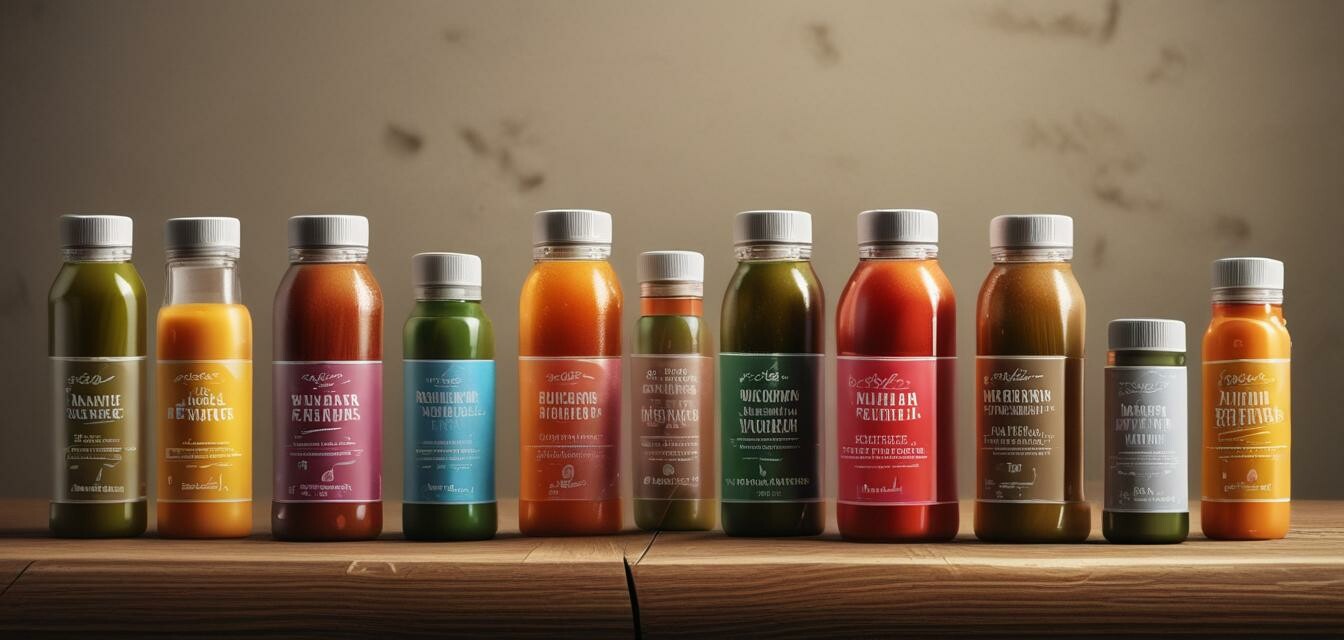
Prenatal Vitamin Formulations: What’s New in 2025?
Key Takeaways
- The prenatal vitamin market is evolving with innovative formulations designed for modern expectations.
- New ingredients are being incorporated to support the diverse needs of expecting mothers.
- Regulations and consumer preferences are driving changes in the packaging and sourcing of prenatal vitamins.
- Research and development play a crucial role in introducing safe and effective product options.
As we step into 2025, the landscape of prenatal vitamins is changing rapidly. Expecting mothers are more informed than ever and are seeking products that align with their health goals and lifestyle choices. Let's explore the exciting developments in prenatal vitamin formulations, the innovative ingredients that are becoming popular, and how they cater to the needs of modern mothers.
The evolution of prenatal vitamins
Prenatal vitamins have come a long way from traditional formulations. The early days primarily focused on basic vitamins and minerals like folic acid and iron. However, with advancements in research and a deeper understanding of nutrition, new formulations are emerging, introducing beneficial components that target overall pregnancy wellness.
Trends in prenatal vitamin formulations
Here are some significant trends observed in prenatal vitamin formulations for 2025:
- Incorporation of Superfoods
- Plant-Based Ingredients
- Cognitive Support Nutrients
- Personalized Supplement Options
- Enhanced Absorption Features
Innovative ingredients to watch
Current formulations now boast a variety of innovative ingredients designed to meet the specific needs of expecting mothers. Here is a closer look at some of these exciting additions:
| Ingredient | Benefit |
|---|---|
| Choline | Supports fetal brain development and memory. |
| Probiotics | Promotes gut health and may ease digestive issues commonly experienced during pregnancy. |
| DHA | Essential for fetal brain and eye development, often sourced from algae for plant-based options. |
| Methylated Folate | Provides a bioavailable form of folate that is easier to absorb, especially for those with MTHFR gene mutations. |
Consumer preferences and product sourcing
Today's consumers are increasingly aware of what they are putting into their bodies. As a result, many brands are shifting towards sustainable and ethically sourced ingredients. Transparency about ingredient sourcing is becoming essential, as expecting mothers want to ensure that their prenatals support not just their health but also the health of the planet.
Eco-friendly packaging solutions
As sustainability gains traction, brands are responding by enhancing their packaging approaches. Expecting mothers are looking for products that come in recyclable or biodegradable containers. The appeal of minimalistic, eco-friendly packaging is also on the rise, aligning with the interests of environmentally conscious consumers.
Research and development impact
Research in prenatal nutrition continues to evolve. Many brands invest significantly in research and development, collaborating with nutritionists and healthcare professionals to create effective formulations. With new research findings emerging, we can expect even more tailored options in prenatal vitamins that cater to specific dietary needs.
What to look for when choosing a prenatal vitamin
Given the plethora of options available, here are key factors to consider when selecting a prenatal vitamin:
- Ingredient Transparency: Opt for brands that clearly list their ingredients and sources.
- Professional Endorsements: Look for products that are endorsed or recommended by healthcare professionals.
- Certifications: Choose vitamins that have relevant certifications (e.g., non-GMO, gluten-free).
- Formulation: Determine if chewable, tablet, or liquid forms suit your lifestyle better.
Pros of modern prenatal vitamins
- Enhanced nutrient profiles to support pregnancy health
- Personalized options that align with specific dietary preferences
- Increased transparency and sustainable practices in sourcing and packaging
Cons of modern prenatal vitamins
- Potentially higher price points compared to traditional options
- Overwhelming choices may lead to confusion for new consumers
- Ingredient sensitivities or reactions to newer formulations
Conclusion
As we look toward the future, the prenatal vitamin industry promises to continue evolving. With innovative formulations, more informed consumers, and a broader understanding of nutrition, 2025 will undoubtedly bring exciting advancements. Understanding these trends not only helps expecting mothers choose the right vitamins but also highlights the importance of research and transparency in prenatal nutrition.
Stay tuned to our News and Trends section to keep updated on the latest developments in prenatal health and nutrition!
